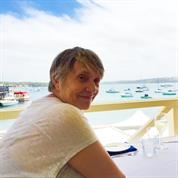As committed campaigners around disability, architecture and design, the DisOrdinary Architecture Project has struggled to scale-up and become robust and sustainable. A small Catalyst Award has given us vital time to clarify our vision and to instigate development planning.
The DisOrdinary Architecture Project grew out of a previous platform, originating in 2007, bringing together disabled artists with architectural practitioners, students and educators in order to think about disability more creatively within building and urban design. Its mission is “to promote activity that develops and captures models of new practice for the built environment, led by the creativity and experiences of disabled artists.”
We already had proof of concept – having run successful design charrettes, bringing together architects and artists in the Turbine Hall, Tate Modern, as well as other art galleries and designed spaces; and prototyping a series of interventions into architectural and interiors schools across the country (see examples of our Arts Council England funded work in 2017). This has led to further ACE funding for a wider range of work in 2018, incorporating more co-partnered artist-educator projects, as well as developing relevant resources and training/coaching activities. However, whilst the core group of about 25 artists has been committed and engaged throughout, the common experience of other demands on everyone’s time and efforts, has meant that our activities have been more sporadic and fragmented than we wanted, to really make an impact across the sector, through an intended paradigm shift in how disability, access and inclusion is imagined.
Our activities to date reveal that there is a deep unmet demand (particularly amongst the current generation of architectural and interiors students) to engage with dis/ability - that is, both disability and ability - as a creative generator in design, and not just a ‘boring’ technical and legal requirement that becomes a problem only at the end of current design processes.
We continually meet more and more people who want to discuss and generate innovative new design approaches centred on our many different ways of being in the world. We also want to involve more disabled artists who are interested in built environment design and would like to work with us to enable creative and inclusive improvements to built space.
In the belief that social change can happen through the additive accumulation of many small, creative and positive actions, we want to scale-up The DisOrdinary Architecture Project, so that it can become completely available to, and embedded in, built environment education and practice across the UK and elsewhere. We want to move towards a situation where access and inclusion is thought of as a socially responsive avant-garde form of practice, not the ‘dull’ end of the profession. An important step in this process has been having time - through the RSA Catalyst Fund - to workshop our future, supported by a facilitator and critical friend. This enabled us to clarify our aims and identity; to define audiences and communications strategies; to decide on an appropriate organizational and governance structure; and to explore income streams, as well as possible funding and sponsorship. One key output was a 3-year timeline that helped us prioritise goals and coordinate outputs, outcomes and impact strategies.
This means, that for 2018, the future of DisOrdinary Architecture looks bright. We are experimenting with, and evaluating, different modes of engagement with architecture as a discipline, process and as built space (such as disabled artists in residence schemes, artist ‘hit squads’, discursive and co-design events, and training programmes). We are finding many like-minded individuals and groups, including collaborations planned with the Universities of Michigan and Yale in the States. We are creating a new website to build up our online presence, including a database of resources and training/coaching opportunities. And we are actively developing income-generating activities, applying for relevant funding, as well as reaching out to potential sponsors.
We welcome connections and possible collaborations with similar FRSA projects; as well as with like-minded organisations, networks and individuals.
http://josboys.surfaceimpressions.co.uk/Disordinary
@disordinaryarch
You can read about past Catalyst projects, where our Fellows share their learning and how they used the funds.
If you are keen to learn more about the Catalyst Grant, please do not hesitate to get in contact with the Engagement Manager, Amy Butterworth, at Amy.Butterworth@rsa.org.uk. You can also find the other ways the RSA supports Fellow-led projects on the Project Support page.
Which 21st century women will you nominate to become a Fellow? Get in touch with our Fellowship Development team to help us recruit more women.

Be the first to write a comment
Comments
Please login to post a comment or reply
Don't have an account? Click here to register.